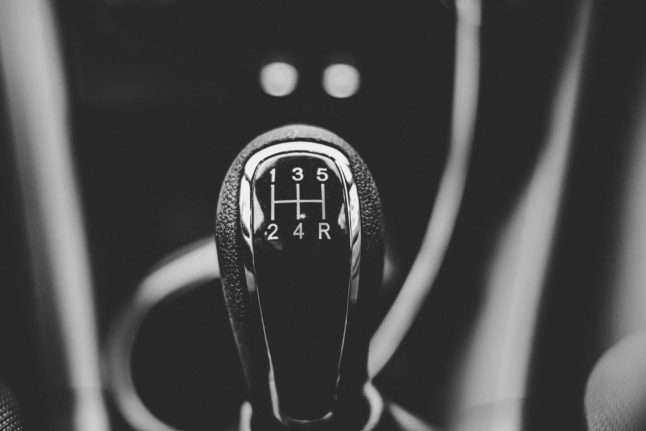In France, automatic cars are becoming more popular – over half of new cars sold in 2021 were automatic – but there are still a fair share of manual transmission vehicles on the roads.
When renting a vehicle in France, stick-shifts are often cheaper and more readily available than automatics.
So if you’ve only ever driven an automatic, is there anything to stop you driving a stick shift car in France (apart from the fear of bunny-hopping out of the parking lot while you figure out how the clutch works)?
Tourists, holidays and short-stays
People visiting France on holiday can drive on their foreign licence, as long as they are of legal driving age and the document is valid.
French law expects foreigners to “comply, where applicable, with any provisions regarding the validity of the driving licence”.
So if you have a licence that specifically states it is for automatic vehicles only – eg a UK Category B licence – you can only drive automatic vehicles in France.
However US driving licences usually do not specify automatic v manual and allow you to drive all car types, so you can drive a stick shift car in France unless your licence specifically says otherwise.
There are some other requirements visitors should be aware of – you may need to have a French translation of your licence on hand. Otherwise, you can accompany your foreign licence with an international driving licence (IDL). The French translation should be done by a certified translator (traducteur agrée).
In practice, some rental agencies that operate in multiple countries may not ask you for the translation or an IDL, but it is still best to abide by the French rules. Americans can request an IDL online here.
Drivers with EU licences and UK and NI licence-holders are exempt from the translation/ International Driving Permit requirement.
Foreign residents of France
If you’re living in France the situation is slightly different and most holders of non-EU driving licences will eventually have to swap theirs for a French licence.
Full driving licences from EU Member States are valid in France. EEA country licences have the same status.
Most non-EU licence holders will have to swap theirs for a French licence within one year of moving, with a slightly different situation for UK licence holders.
The UK and France announced in June 2021 that a reciprocal agreement had been reached that allows people who live in France and have a UK or NI licence that was issued before January 1st, 2021 to continue using them. The licence only needs to be swapped for a French one once the licence itself or the photocard is within six months of its expiry date. Drivers with a UK or NI licence issued after January 1st 2021 must swap it for a French one within a year of moving.
Only non-EU students (people who hold a carte de séjour with the mention ‘étudiant‘) are exempt from the one-year requirement, but if they stay in France after their studies and switch onto another residency card then they will also need to exchange their licence.
Explained: Do I have to swap my driving licence in France?
So will your new French licence allow you to drive a stick shift?
Well, it depends on your original licence and the swap process.
France does have an ‘automatic only’ licence, it’s known as Permis boîte automatique or a mention 78 because the document issued will state the number ’78’ under the restrictions section on the back of the licence. This would also be where any other restrictions, like the requirement to wear glasses (01), would be listed.
If you have a licence from a country that specifies automatic-only (such as the UK’s Category B licence), you will get a like-for-like exchange with a French mention 78 licence, and can therefore only drive automatic vehicles.
If you have a US licence which doesn’t specify manual or automatic then you can swap it for the standard French Permis B, which allows you to drive both. If, that is, your licence was issued in a state that has an agreement with France that allows for a driving licence swap – find the full list here.
If your state does not have an agreement, you will have to take a French driving test.
READ MORE: Four years and €1,800: What foreigners should know about the French driving test?
If you’re taking the test, you will be able to decide between the standard Permis B, which includes the ability to drive manual transmission cars, and the specific Permis B ‘boîte automatique‘ for automatics only.
Can I add the manual category later on?
If you later change your mind, you can take an additional training course to convert your ‘automatic only’ licence into a full one, and recently France recently made it simpler to do so.
Previously, automatic-only motorists had to wait three months before taking steps toward the full transmission licence. However, as of March 2024, the three-month wait time was removed.
This means that any Permis B licence holder with a ‘mention 78‘ can immediately take the additional seven-hour training course to gain the ability to drive manual vehicles in France. The course must be taken with an approved driving instructor and you will then need to apply to ANTS to have your licence conditions updated.
In 2022, 14 percent of Permis B candidates applied for an ‘automatic-only’ licence, and 28 percent of them added on the manual training in 2023.



 Please whitelist us to continue reading.
Please whitelist us to continue reading.
Member comments